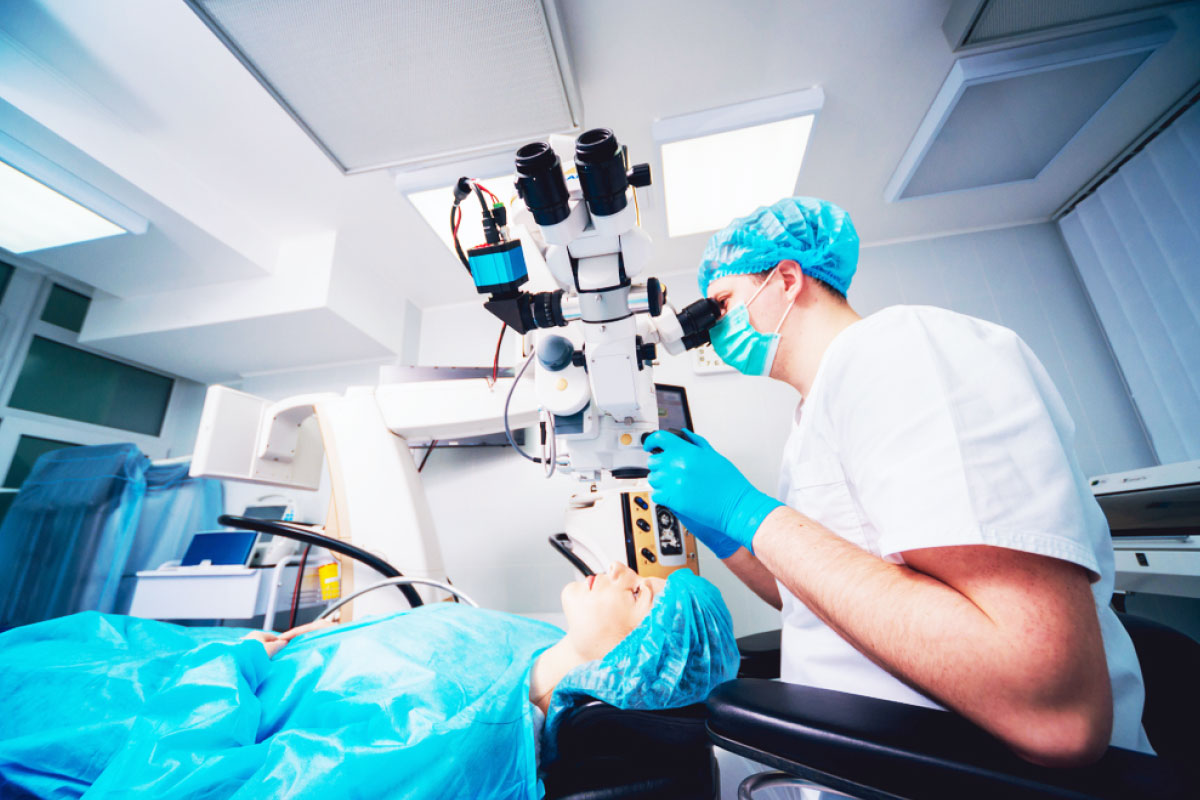
LASIK Surgery
LASIK vision correction is an excellent alternative to eye wears and lenses. It reduces your dependence on glasses and contacts while it helps you regain an active lifestyle. With proven results Laser vision correction is quick and painless yet safe and effective. Thanks to this innovative procedure, millions of people now enjoy the freedom of natural vision.
The LASIK procedures are aimed to treat common refractive errors such as nearsightedness (myopia) and farsightedness (hyperopia) and irregular shaped cornea (Astigmatism).
These procedures makes use of an excimer laser in order to correct common vision errors, by reshaping the cornea which allows light rays to focus directly onto the back portion of the eye called the retina, providing clear vision.
The LASIK procedure involves two steps:
Step One:
A precise flap-making instrument referred to as a microkeratome, or a femtosecond laser is used to form a thin flap of cornea. This very precise laser machine can cut a very thin layer of the cornea without damaging any of the surrounding tissue. This flap is then raised and laid back carefully, to perform the actual laser vision correction procedure.
Step Two:
The surgeon then performs the laser vision correction techniques to reshape the cornea by removing the tissue from its middle layer with the help of the excimer laser. The flap is carefully returned to its original position and therefore the procedure is complete. The whole procedure normally takes about fifteen to twenty minutes with minimal to no pain. By performing the treatment under a flap, the eye is able to heal more quickly and patients often notice clear vision the very next day.
The Procedure Corrects:
Myopia also known as Nearsightedness is a condition where a person’s eye is longer than a normal one. As a result, objects at a distance appear to be blurry and unclear. Without being treated for your myopia, you would possibly end up squinting or straining your eyes in order to see clearly. You’ll also experience headaches or feel tired when doing things like driving or playing sports.
Glasses and contacts lenses can mask the effects of Myopia, At Hashmanis, we have a variety of options specially designed for the long-term treatment of this condition.
Hyperopia also known as farsightedness, is a condition when a person find trouble seeing nearby objects but can see distant objects more clearly. This is because a hyperopic eye is shorter than a normal-sized one, so light converges on a point after the retina making the picture out of focus.
At Hashmanis our experienced Ophthalmologists will determine the customized vision solution specially for your eyes to correct your vision problem based on your prescription.
Astigmatism is an eye condition that can leads to blurry, fuzzy or distorted vision from far and near distances because of an irregularly-shaped cornea. Within the normal eye, the cornea is curved equally on both horizontal and vertical axes. When light rays enter the eye and hit the retina, they focus at one point, leading to a clear vision.
Astigmatism consider to be irreversible, But at Hashmanis it is possible to correct it.
Wavefront LASIK
Hashmanis is the only hospital in Pakistan that performs the the foremost advanced Wavefront LASIK surgery. The eye surgeon can calculate the aberrations in your cornea’s shape and texture with the help of wavefront device, and customise the lasers to treat all these aspects of your cornea for more accurate results.
Topography guided LASIK
Topography-guided LASIK is an advanced treatment available at Hashmanis for myopia and astigmatism patients. The procedure customizes the laser treatment according to the unique surface shape of your eye. Topography-guided LASIK includes wavefront optimization, specifically designed to improve the final shape of the surface of the cornea to prevent side effects like glare and halos at night.
FEMTO LASIK
Femto LASIK is one of the most advanced and efficient bladeless laser eye treatment technology introduce by Hashmanis in Pakistan. With the help of this procedure the surgeon can easily correct refractive errors between -12 and +6 D. The main difference between standard LASIK and Femto-LASIK is the corneal flap preparation.
